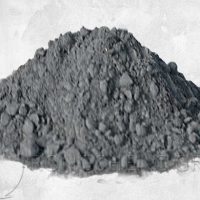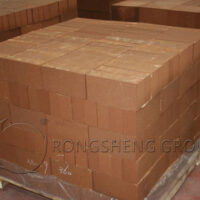Refractory materials refer to inorganic non-metallic materials of which the refractoriness is more than 1580 ℃. Refractories materials are widely used in the metallurgy industry, chemical industry, petroleum industry, and machinery manufacturing, etc.

Based on the mineral composition
There are different standards of the classification of refractory materials. Based on the mineral composition, the different types of refractories are carbon materials, magnesia refractories, silicon refractory materials, alumina materials, chrome refractories, and corundum refractory materials, etc.
According to the chemical properties
According to the chemical properties, the types of refractory materials are acid refractory materials, neutral refractory material, and alkaline refractories.

The main component of the acid refractory is silicon oxide, and the common bricks are silica bricks and fireclay bricks. The former contains 94% of silicon oxide, and take the silica as raw materials. Such bricks are featured with strong acidic slag erosion resistance, and high refractoriness, being widely used in the coke oven, glass furnace, and acid steel making furnace, etc. while the latter is mainly made of fireclay, plus 30%-46% of alumina. Such bricks are weak acid refractory materials, being featured with good thermal shock resistance, and acid resistance.
Neutral refractory materials contain alumina, chromium oxide, and carbon. Corundum products, chrome bricks, and carbon refractory materials are common types of such materials. Corundum refractory materials are high-quality refractory materials, which contain alumina more than 95%. Chrome bricks are used as insulation bricks. And carbon refractory materials can be classified into carbon bricks, graphite products, and silicon carbide products, being featured with low thermal expansion coefficient, good thermal conductivity, good thermal shock resistance, high strength at high temperature, and anti-acid and alkali performance.


As for the alkaline refractory materials, such products are made of magnesium oxide and calcium oxide. The most commonly used products are magnesite bricks, which contain magnesium oxide about 80%-85%,with characters of alkaline slag and iron slag resistance, being widely used in the open-hearth furnace, electric furnace, and non-ferrous metal smelting equipment, etc.
The most commonly used refractory materials
The most commonly used refractory materials are shaped refractory, unshaped refractory, and insulation refractory.
In accordance with the shape of the refractory materials, different types of refractories are shaped refractory materials, and unshaped refractory materials. The former usually refers to the refractory bricks, and the latter refers to the monolithic refractory. Shaped refractory materials are refractory bricks, such as AZS refractory brick, high alumina brick, magnesia brick, fireclay refractory brick, silicon brick, corundum brick, direct-bonded magnesia-chrome brick, silicon-carbide brick, and insulation brick, etc.
Unshaped refractory materials are also called monolithic refractory, which is made of powder, aggregate, and binder, being used directly without firing, such as ramming mass, plastic, castable, pouring materials, gunning mass, and coating materials, etc.
Classification of refractories are different according to different standards, and the types of refractories are different. It means that the manufacturers and the users must choose the materials correctly, to improve production efficiency and save energy.












